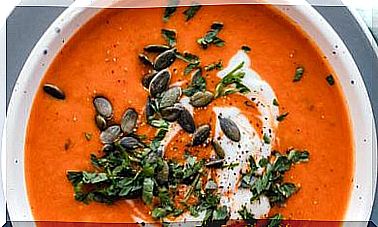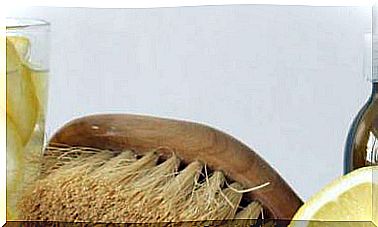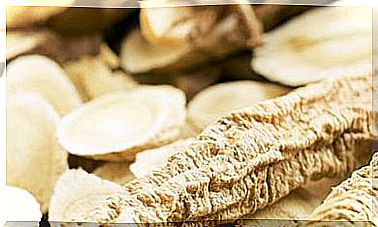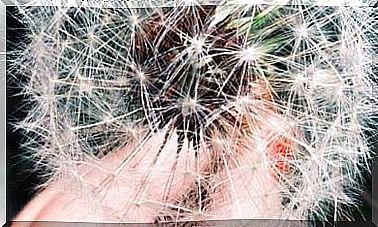The 6 Most Worrying Types Of Additives
All processed foods contain additives with unknown or directly harmful effects on health. The solution: always choose fresh and natural.

Incredibly, additives have defenders. There is no shortage of nutritionists – close to the industry – who praise them for their usefulness, especially to improve the preservation of products, and then they usually assure that they are safe because they are consumed in minimal quantities and have passed legal sanitary controls.
But they should add “today …”, because we do not know if tomorrow one of them will be banned as new studies on their toxicity appear.
An example of the above is what happened in 2006 with the preservatives E-216 and E-217 when their detrimental effect on the endocrine system was discovered. Another indicator of questionable safety is that additives currently authorized in Europe are banned in other countries. But the problem of additives goes much further.
Processed foods full of suspect additives
There is a direct relationship between additives and processed foods : the more additives, the more processed the product is and the less healthy it is. The effects of additives are lethal. This is denounced by the report “Give me poison: trip to the center of the food that makes us sick”, carried out by the VSF Global Food Justice organization.
According to this report, 90,000 people lose their lives a year in Spain due to a poor diet, with an excess of processed foods, which account for up to 70% of the shopping basket of an average family. These products are responsible for at least half of cardiovascular diseases, diabetes, and stomach and colon cancers.
For the sake of everyone’s health, it is necessary that real and natural foods regain ground compared to processed ones.
Eating real food, the best way to avoid it
A long-time advocate for royal food is journalist and food expert Michael Pollan. Its three criteria for nourishing yourself with real food are known:
- Avoid products that contain unknown ingredients or whose name is unpronounceable, which at a stroke leaves out thousands of “foods” that fill the shelves of supermarkets.
- Reject those that contain more than five ingredients.
- Don’t buy the ones that contain high fructose corn syrup.
The application of these recommendations means giving up practically all foods that contain an additive. But it is true that not all additives are the same. Some are totally natural and safe. Therefore it makes sense to ask which are the most worrying additives.
The most questioned food additives
We can divide them into six groups, according to the purpose for which they are usually used in food.
1. Colorants
Coloring additives give products an attractive and appetizing image, especially for children, who are precisely those who are most affected by their consumption.
Colorants such as:
- E-102, E-104, E-110, E-122, E-124, E-127: They are under suspicion of promoting childhood hyperactivity. Since 2010, food containing these colors must indicate on the label that “it may affect activity and attention in children.”
- E-133: It is used in ice cream, sweets and beverages and is prohibited in Switzerland because it can promote asthma attacks.
2. Preservatives
They lengthen the natural period in which putrefaction or mold appears, but they do not completely protect against mycotoxins, but paradoxically they can favor their formation when the preservative effect loses strength.
Among the preservatives under suspicion we find:
- E-211: It is related to childhood hyperactivity, although studies are not conclusive.
- Hydroxybenzoates E-214 to E-219: They are related to harmful effects on the endocrine system (estrogenic action) and trigger allergies with relative frequency. E-216 and E-217 are already banned and the rest should be too, according to Udo Pöllmer, director of the European Institute for Food Sciences and Nutrition.
- Sulfites E-220 to E-228: They can inhibit the use of vitamin B1 and in sensitive people can cause headaches, dizziness or asthma attacks. Products that contain them are required to highlight their presence on the label due to their allergenic potential.
- Nitrates and nitrites E-249 to E-252: They are generally used to make meat products have a deep red color and to prevent the appearance of botulinum toxin. They can be toxic when they bind to human hemoglobin because they cause methemoglobinemia.
3. Antioxidants
By not acting directly against germs, antioxidants are not legally considered as preservatives, although the industry uses them as such because they lengthen the shelf life of food. They slow down the chemical decomposition, the rancidity of fats or the generation of brown spots on the fruit.
Pay attention to:
- Gallates E-310 to E-312: They are attributed the risk of causing dangerous cyanosis (insufficient oxygenation of the blood) in babies. They can affect the immune system.
- Butylhydroxyanisole (E-320 or BHA) and butylhydroxytoluene (E-321 or BHT): Allergens, it is suspected that they may favor the development of cancer, immune, liver and hormonal alterations. They are probably the most questioned food additives at the moment and their prohibition in the short or medium term is likely.
- Sodium orthophosphate E-339: Used in soft drinks, it reduces the absorption of calcium, iron and magnesium.
4. Thickeners and emulsifiers
Thickeners and emulsifiers (E-400 to E-500) are used to achieve a certain “mouth feel”, such as creaminess or consistency. They are considered safe, but there are doubts.
- E-480 and E-466: A study at Georgia State University (United States) discovered three years ago that these two additives alter the composition of the intestinal microbiota and can promote metabolic syndrome, obesity, diabetes and disease inflammatory bowel. The study was carried out with laboratory animals but the results are probably extrapolated to people.
5. Flavors or flavor enhancers
Flavor enhancers are used to make up for quality deficiencies in industrial products and to increase their addictive capacity. Among the most questioned are:
- Glutamates E-620 to E-625: Intensify the flavor and can cause “Chinese restaurant syndrome” in sensitive people, with symptoms such as pressure on the temples, headache and stiffness. Fertility and learning problems, hunger attacks, and obesity have occurred in laboratory animals.
6. Sweeteners
Its objective is to reduce the calories of the products made so that they do not favor obesity, but its real effect may be the opposite, because they stimulate the appetite and habituate the sweet taste. In addition, some have other negative effects.
- Acesulfame K E-950: Causes alterations of the genetic material, according to animal studies.
- Aspartame E-951: Suspected of promoting a variety of diseases, including cancer, but studies are conflicting. Chemically it resembles peptides and hormones, so it could be a confounding factor in the body. According to chemist Udo Pöllmer, it should be banned until disputes are clarified.
- Saccharin E-944 and Sucralose E-955: These are controversial sweeteners that should be avoided.
What is hidden behind some food additives
Many vegetarians and vegans do not know that a good number of additives they may consume are of animal origin. There are many additives that can be of animal or vegetable origin, which makes it necessary to inquire with each manufacturer.
The additives that are exclusively of animal origin are the following:
- E-120: red dye obtained from cochineal
- E-441: gelatin, obtained from skin, bone and cartilage
- E-542: of bones
- E-901: from beeswax
- E-904: Lac Worm
- E-910, E-920 and E-921: generally obtained from hairs
- E-913: from sheep’s wool
- E-966: from milk
It is not easy to know from an additive whether it is transgenic or is in the form of nanoparticles. Both characteristics are related to suspicions about its safety for health.
When an additive contains nanoparticles smaller than 100 nanometers, it is mandatory to declare their presence on the labels. Contains nanoparticles E-551 or titanium dioxide, related to disorders such as Crohn’s disease.
There are also additives obtained by transgenic, directly or indirectly, such as lecithin or E-322, which can come from genetically modified soybeans.
Another possibility is that transgenic microorganisms have been used for the manufacture of the additive , such as in the preparation of vitamins C, biotin, B2 or B12, aspartame (E-951), xanthan gum (E-415) or enhancers of the flavor (from E-620 to E-625).
Finally, remember that it is difficult to find foods prepared without additives and that quality foods do not need to improve their taste or color. Therefore, it is best to always opt for natural and fresh food from a trusted supplier.








